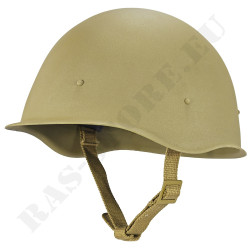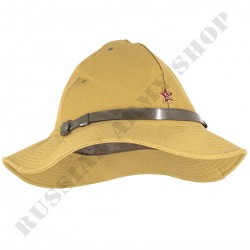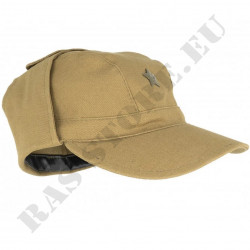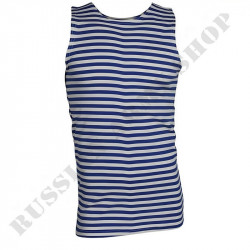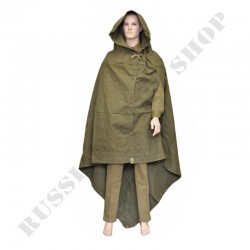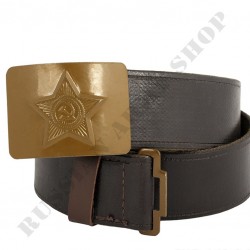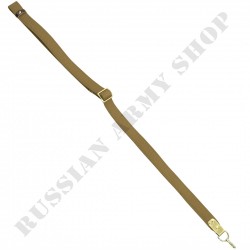No products
AFGHAN GEAR There are 24 products.
Soviet steel helmet "SSH-40" Replica
From the early Middle Ages to the present day, soldiers of opposing sides have used metal helmets of various shapes and strengths to protect their heads in battle. Over time, they evolved into helmets, required to be worn by soldiers during combat operations.In 1940, the SSh-40 (steel helmet of the 1940 model) finally appeared, meeting all the...
87,00 €Will be shipped from EUPanama "Afghanka"
The Panama-Afghanka hat became a symbol of the war in Afghanistan. Afghanka is great for hot weather when you need protection from the sunshine. This panama was used by Soviet Army during the Afgan War. Exact Soviet panama copy.
57,92 €Will be shipped from EUSoviet Army Cap "Afghanka"
Afghanka cap was worn by Soviet soldiers in Afghan in summer and was used until the first Chechen campaign. It has fastens with two buttons. There are also two ventilation holes on each side.The cap is made of light and breathing material, protects from overheating, sand and dust. The green star is not included.
22,00 €Pre-order, Will be shipped from EUSleeveless "Telniashka"
Telnyashka is one of the most important symbol. It symbolizes military traditions and also different types of armed forces according to color. VDV Blue MVD Black NAVY Dark Blue National Guard Maroon Border Troops Green
16,00 €Will be shipped from EUSoviet Vest "Lifchik"
Poyas-A and his younger brother Poyas-B became the first full-fledged tactical vest of the Soviet army. The development was carried out taking into account real combat conditions, and combat officers took part in it. The ammo pouches could hold several AK-74 mags, and hold up to ten grenades. For the first time, army designers paid attention to the...
122,40 €Pre-order Will be shipped from EUSoviet Army Summer Suit "Afghanka" BDU
The Afghanka is a Soviet military slang term for a field uniform system developed and issued by the Soviet Army in the early 1980s. The popular name of the uniform was derived from its prolific use during the Soviet war in Afghanistan. Today the Afghanka design uniform sometimes still in use by Russia, Ukraine, Kazakhstan, Lithuania, Belarus and Georgia....
104,00 €Pre-order, Will be shipped from EUSoviet Body Armor "6B2" Replica
The 6B2 bulletproof vest was developed at the request of the USSR Ministry of Defense in 1980, after which it was supplied to the Soviet Army. The vest was used in all branches of the Soviet Army during the Afghan War of 1979-1989, and still remains in service in some post-Soviet states.
79,00 € 84,00 €Reduced price!Pre-order, Will be shipped from EUSoviet Body Armor "6B3" Replica
Body armor "6B3" appeared in the Soviet Army in 1983. It was used in all branches of the Soviet Army in the Afghan War of 1979-1989 and by the Russian troops during the First and Second Chechen War. And even now it's used in several CIS countries.
152,00 € 179,00 €Reduced price!Will be shipped from EUSoviet Haversack Bag
Soviet Haversack is a simple bag with straps, its volume can reach 30 liters, if use it properly.Haversack Bag has a main compartment with an external pocket, and there is a section for the "tag" with the name of the soldier or user on it. A strap of a backpack turns into shoulder straps, and there are straps on the sides for attaching additional equipment.
39,00 €Will be shipped from EUPlasch-Palatka (Cloak-tent)
The Cloak-Tent is a multifunctional piece of military equipment designed for various outdoor uses. Made of durable tarpaulin, it features eyelets and buttons along the perimeter for easy setup. By tightening the laces along the sides, it transforms into a practical cloak with a collar and adjustable hood. The hood can be further regulated with a lace...
45,00 €30 day delivery from EUSoldier Trouser Belt
The most common type of belt in the Soviet Armed Forces is a leather soldier belt with a brass buckle. It was first introduced in 1938 for cadets of military schools of the Soviet Union.
29,00 €Pre-order, Will be shipped from EUAK Carrying Sling
Original Soviet / AK, SKS, SVD, carrying sling.Two-point belt for AK having 1 carbine and the maximum length of 130 cm and width 3 cm.Made of durable material (tarp) with a special weave structure, which provides extra durability and protection against damage. The original strap easily adjusts to the size of the individual owner and provides comfortable...
23,80 €Will be shipped from EU

